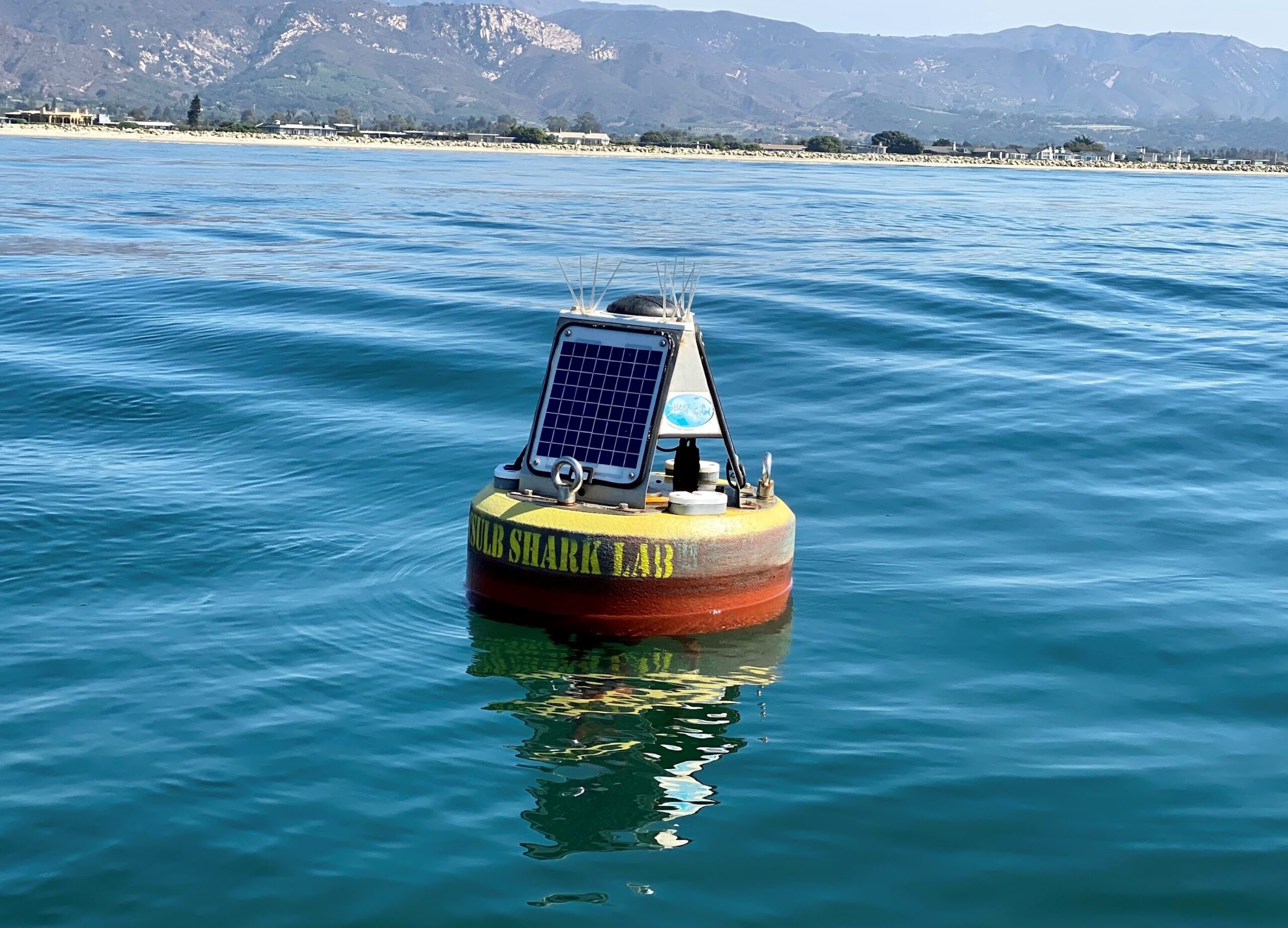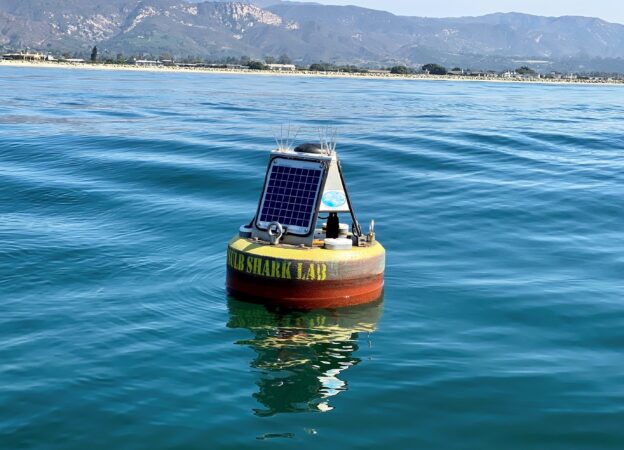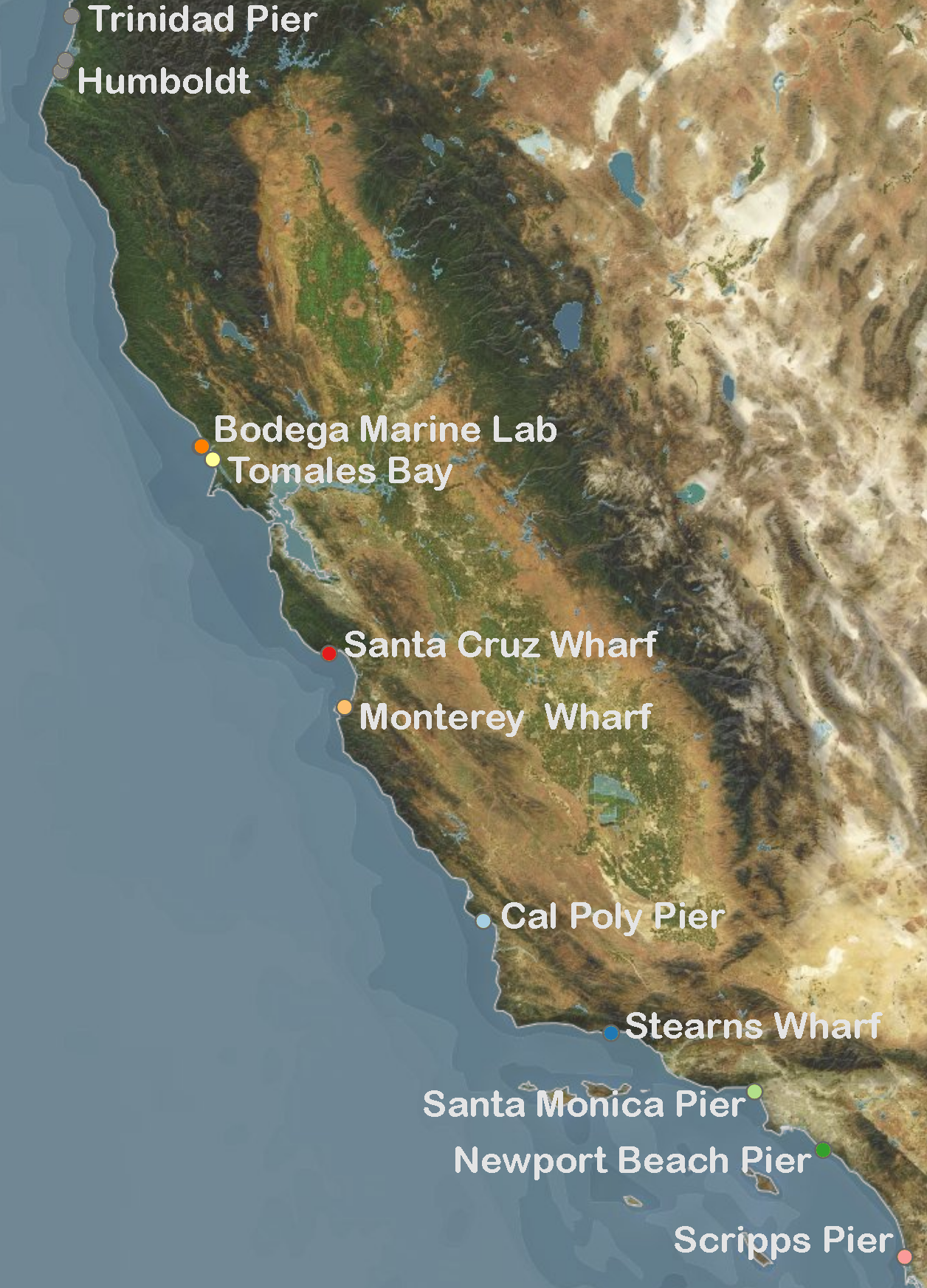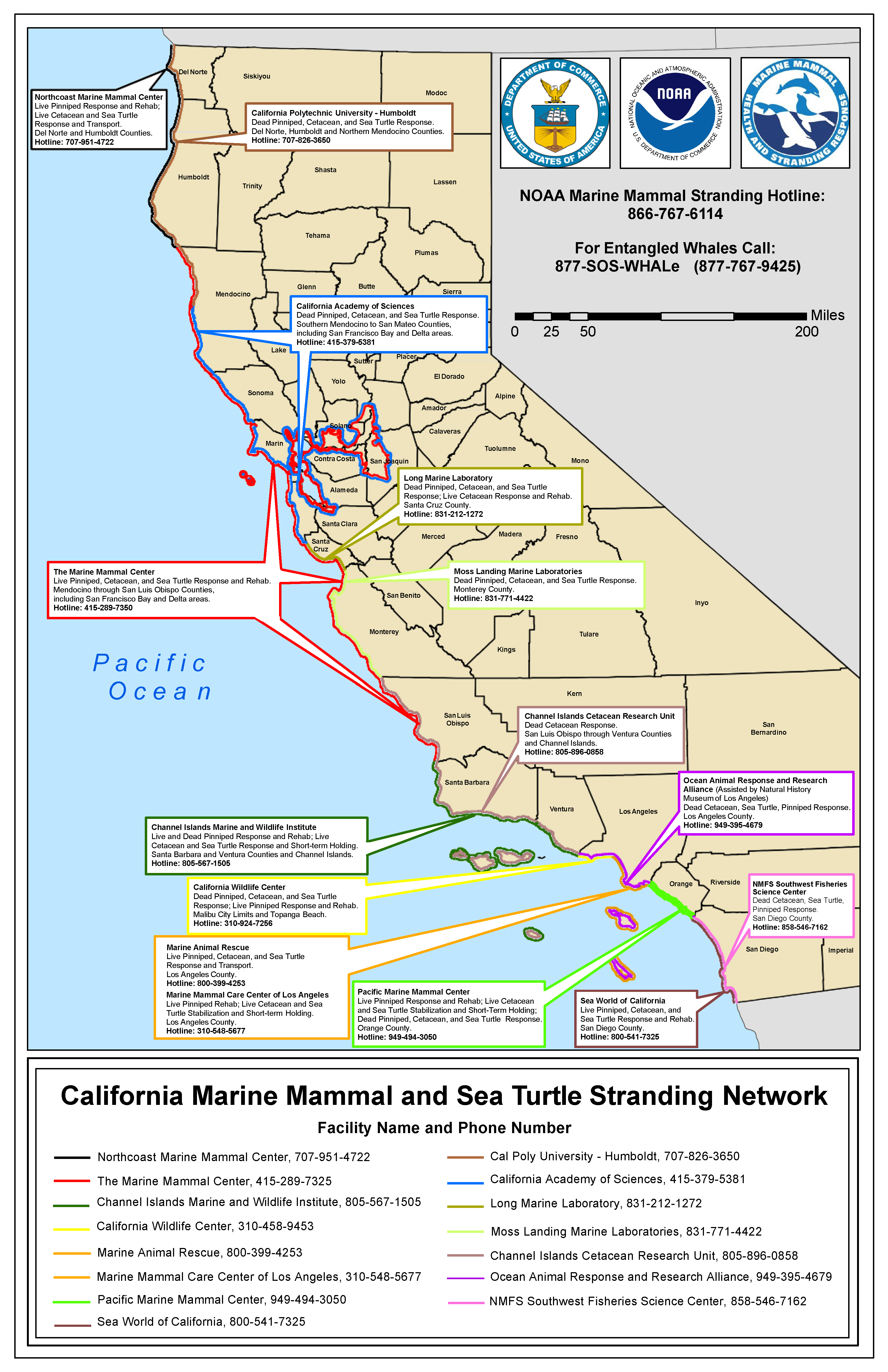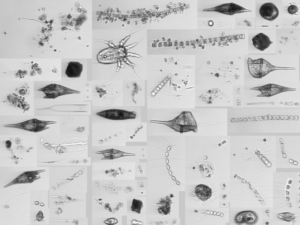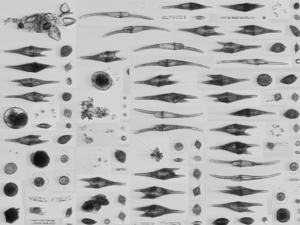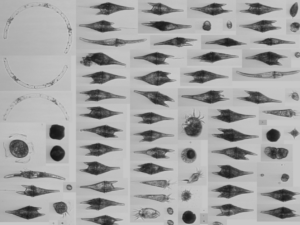Late Summer/Early Fall Report
August 2023 – October 2023
NEW BULLETIN FORMAT
Apologies are necessary for significant delays in bulletin preparation and dissemination since July. SCCOOS staff have been working diligently on giving the bulletin a makeover, and here we are, just in time for the holidays. This bulletin synthesizes August to October HAB data, so keep an eye out in early 2024 for the late Fall roll-up.
We welcome feedback on formatting and whether quarterly bulletins vs monthly bulletins are more useful to you.
Stay safe and warm, all!
August was the end of the dramatic and traumatic domoic acid event that extended along the coast from San Luis Obispo to San Diego. However, California Sea Lions continued to strand well into August, suggesting either delayed intoxication, or ongoing offshore blooms. The several strandings associated with potential DA toxicosis reported in August shifted into central California, as far north as Sonoma County, as opposed to the southern California nexus of strandings from May-July. This distributions of strandings aligned with C-HARM estimates of ongoing bloom and domoic acid potential, given that particulate DA risk from C-HARM was predicted to be high along the entire coast until October with the broadest offshore extent in central California. Towards mid to late October, heightened pDA risk shifted to central and southern California. Meanwhile, cellular DA probabilities were only high in northern California for August and September and then shifted south to central and southern California, hovering at 50-60% probability for the month of October. As partially reported in the last bulletin, levels of the less toxigenic Pseudo-nitzschia ‘delicatissima’ size class were at bloom levels at all southern California HABMAP pier sites in July. Both size classes of Pseudo-nitzschia bloomed at Cal Poly Pier in July. The less toxigenic size class bloomed again at this site in early September and late October, while the more toxignenic ‘seriata’ group approached bloom levels several times from August to October at Cal Poly Pier and was well above bloom levels at all Monterey and Santa Cruz Wharfs during the July to early August toxic bloom period. Abundances of both size classes remained low at the northern California HABMAP sites all summer and early fall.
Domoic acid measurements from HABMAP were not well aligned with the frequency of high Pseudo-nitzschia ‘seriata’ levels at many sites in the July bloom period. There was one relatively high hit for DA at Stearns Wharf in Santa Barbara in mid-July during the bloom and two very high DA levels recorded at Cal Poly Pier in July and mid-August. No DA measurements are available for the northern California sites.
CDPH state monitoring of the toxigenic ‘seriata’ size class identified relative hot spots in the Humboldt Bay area in September and October, aligning with advisories for consumption of razor clams for northern California (Del Norte County) due to the risk of Amnesic shellfish poisoning. Interestingly, no advisories for domoic acid were issued in the central or southern California regions during the large stranding event from May to late July/early August. Very high levels approaching or exceeding 10,000 cells/L of Alexandrium spp. were recorded by HABMAP at all central California sites from July to the end of October. CDPH sampling at Morro Bay corroborated high central California levels, leading to CDPH and CDFW advisories on recreational harvests of mussels, scallops, and clams in the San Luis Obispo County region. That warning was only just lifted on 12 December 2023.
Interestingly, the IFCBs (robotic microscopes) at southern California HABMAP pier and mooring sites captured dinoflagellate blooms, mostly of the genus Ceratium/Tripos, aligning with “red tides” witnessed along the South Coast in late summer. At Santa Cruz, diatoms were thriving in August, most likely associated with the prolonged upwelling period along the central and northern coast that extends well into August. However, there were few Pseudo-nitzschia present in the Santa Cruz IFCB imagery during that time. That community shifted to an almost monospecific bloom of Akashiwo spp. by September as waters presumably warmed and stratified in late summer.
Particulate Domoic Acid
Particulate domoic acid (pDA) is the measurement of total domoic acid toxin that is potentially extant in a given area. This forecast provides a probability for where that concentration of toxin is predicted to exceed the threshold that classifies a Harmful Algal Bloom (> 500 nanograms per liter).
The C-HARM v3 model generates nowcast and forecasts of the probability of Pseudo-nitzschia concentrations of in excess of 10,000 cells/L, the probability of particulate domoic acid > 500 nanograms/L, and the probability of cellular domoic acid > 10 picograms/cell in California and Southern Oregon coastal waters. Inputs for the model include near real-time satellite observations, gap-filled chlorophyll a, 486nm reflectance, and 551nm reflectance fields from the S-NPP NOAA VIIRS sensor plus nowcast and forecast data of surface salinity, sea surface temperature, and surface currents from WCOFS ROMS.
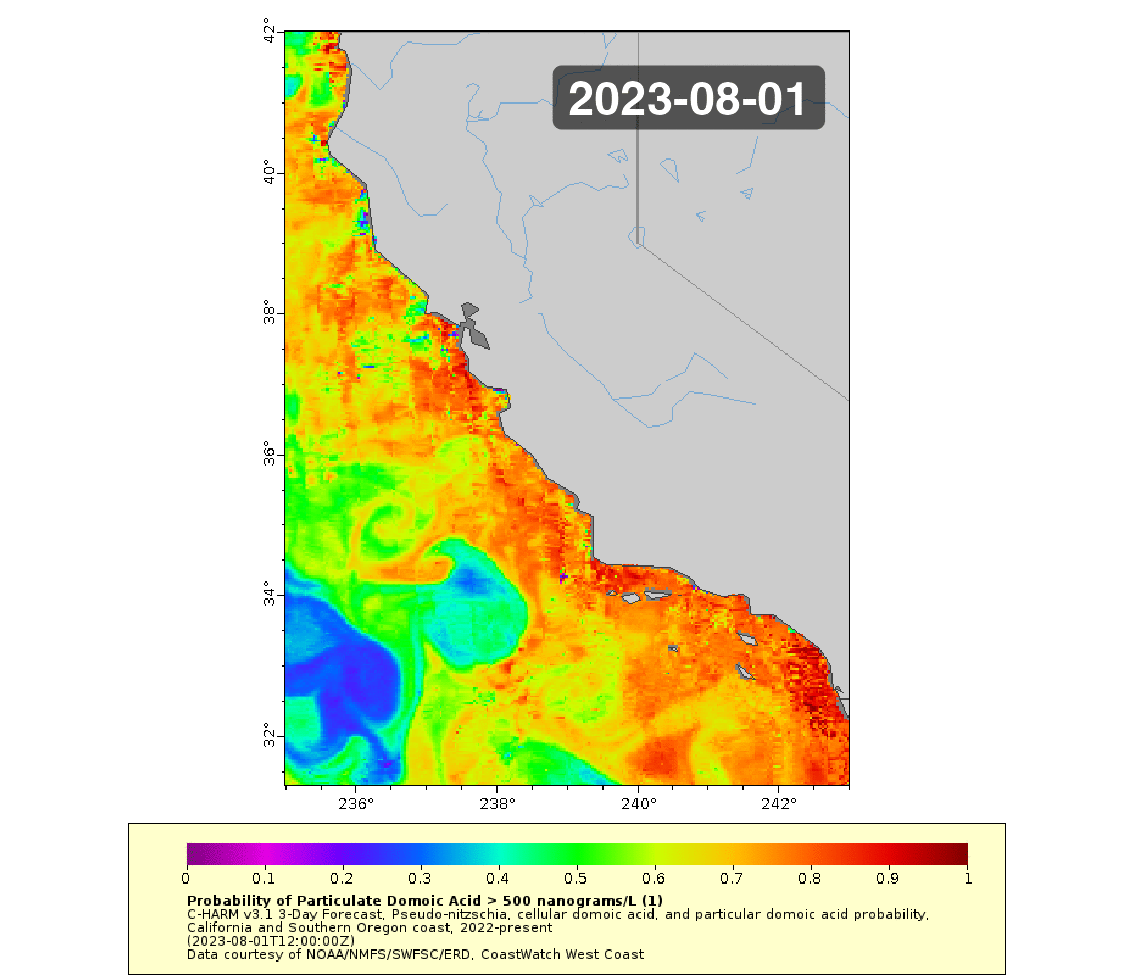
Cellular Domoic Acid
Cellular domoic acid (cDA) is the measure of total domoic acid toxin calculated per cell of Pseudo-Nitzchia. This forecast provides a probability for where those cells are expected to be producing toxin at high levels (> 10 picograms per cell).
The C-HARM v3 model generates nowcast and forecasts of the probability of Pseudo-nitzschia concentrations of in excess of 10,000 cells/L, the probability of particulate domoic acid > 500 nanograms/L, and the probability of cellular domoic acid > 10 picograms/cell in California and Southern Oregon coastal waters. Inputs for the model include near real-time satellite observations, gap-filled chlorophyll a, 486nm reflectance, and 551nm reflectance fields from the S-NPP NOAA VIIRS sensor plus nowcast and forecast data of surface salinity, sea surface temperature, and surface currents from WCOFS ROMS.
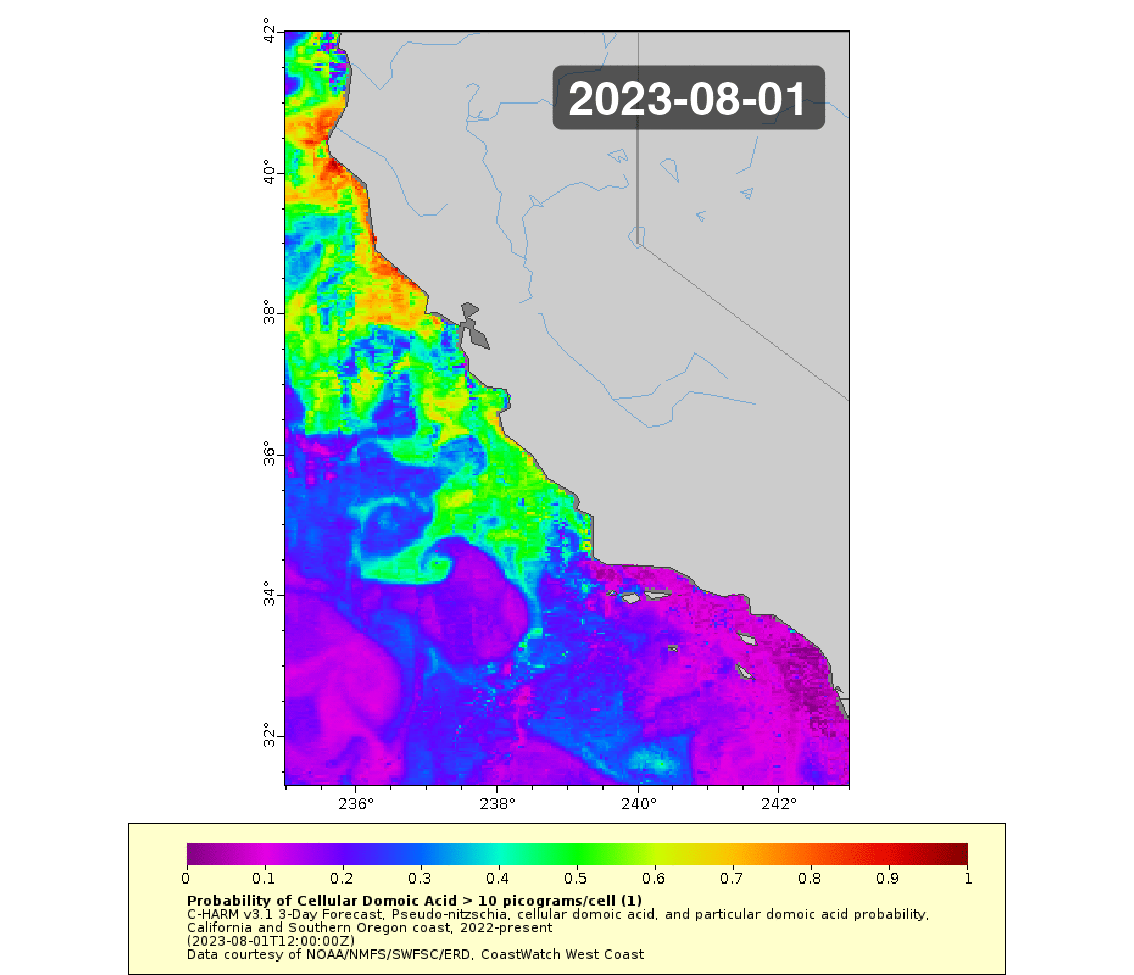
Pseudo-nitzschia
Pseudo-nitzschia is a neurotoxin producing diatom that is observed along the California Coast. Blooms of this phytoplankton can be detrimental to surrounding marine ecosystems. This forecast provides a probability for where the concentration of cells in the water exceed the threshold of a Harmful Algal Bloom ( > 10,000 cells/L).
The C-HARM v3 model generates nowcast and forecasts of the probability of Pseudo-nitzschia concentrations of in excess of 10,000 cells/L, the probability of particulate domoic acid > 500 nanograms/L, and the probability of cellular domoic acid > 10 picograms/cell in California and Southern Oregon coastal waters. Inputs for the model include near real-time satellite observations, gap-filled chlorophyll a, 486nm reflectance, and 551nm reflectance fields from the S-NPP NOAA VIIRS sensor plus nowcast and forecast data of surface salinity, sea surface temperature, and surface currents from WCOFS ROMS.
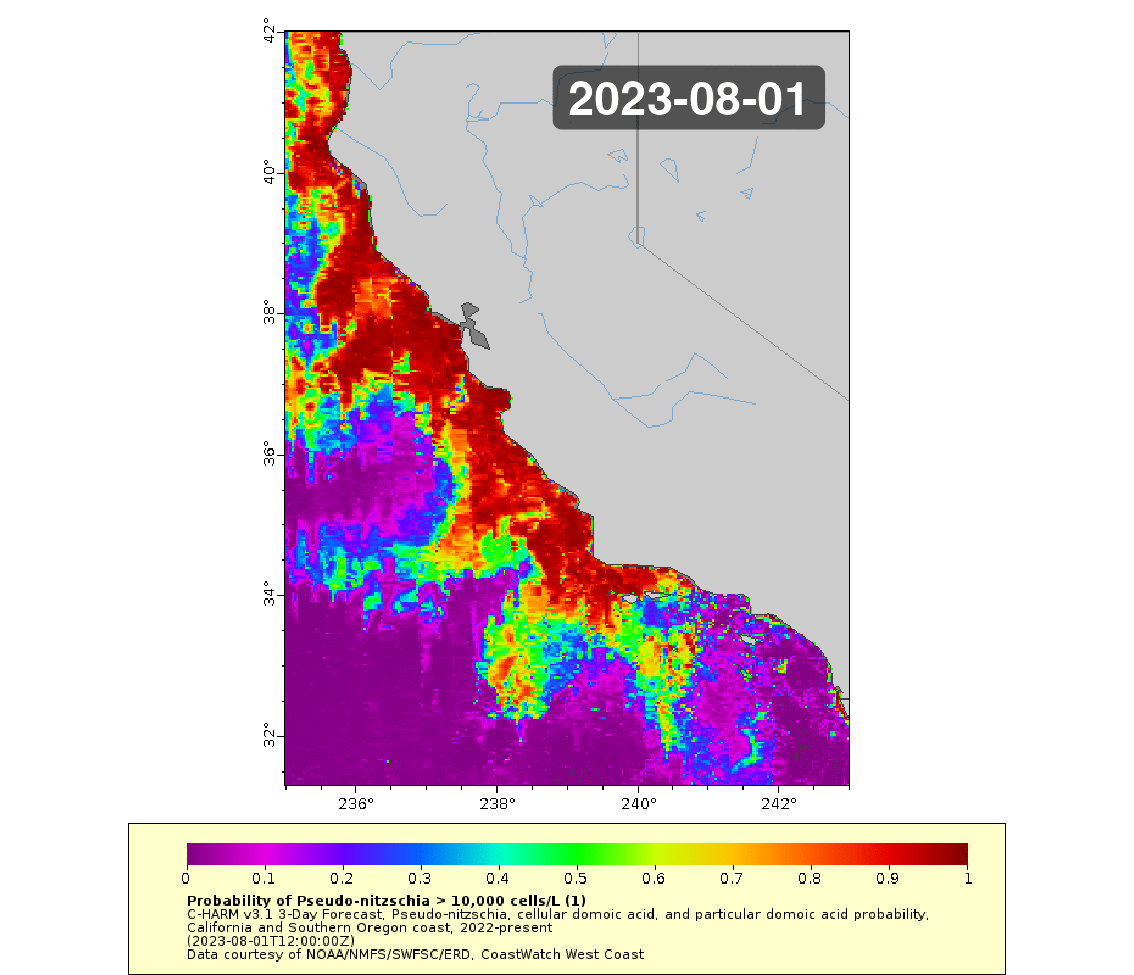
California Harmful Algal Bloom Monitoring & Alert Program
Differentiating Pseudo-nitzschia species by light microscopy is difficult. For this reason, Pseudo-nitzschia “seriata” does not refer to an actual species but rather the larger size class of Pseudo-nitzschia, which is generally a more toxigenic group of species. Alternatively, Pseudo-nitzschia “delicatissima” refers to the smaller size class that is generally non-toxigenic. The dashed line on the plots demarcates the 10,000 cells/L “bloom” threshold designated here for Pseudo-nitzschia populations only.
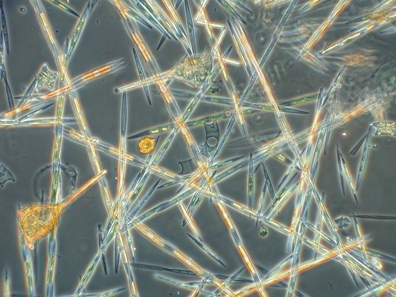
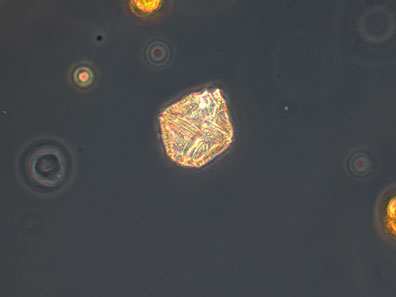
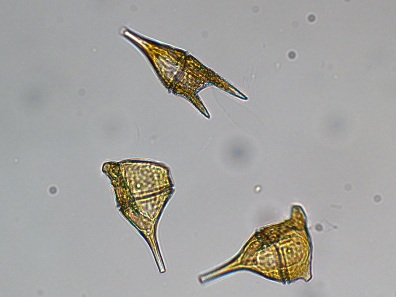
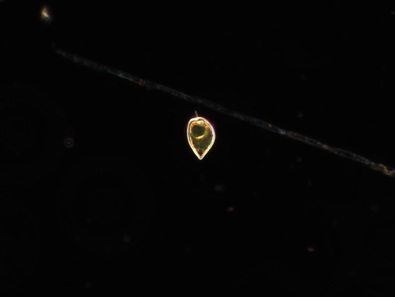
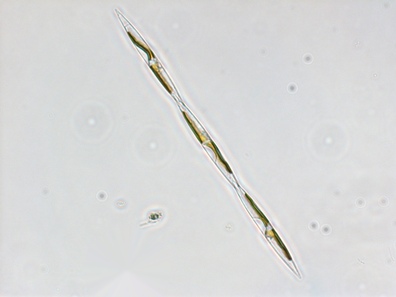
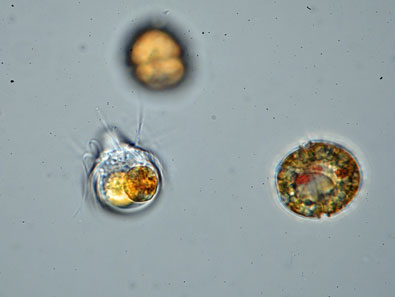
More information and data visualizations on the statewide HAB network and forecasting system can be found on the California HABMAP website and on the SCCOOS Harmful Algal Bloom page.
Domoic acid (DA) is a potent neurotoxin produced by some diatom species of the genus Pseudo-nitzschia. Species exposed to DA can result in seizures, epilepsy, cardiomyopathy, and death depending upon the ingested dose. DA toxicosis commonly occurs in California sea lions (Zalophus californianus), presumably due to a combination of foraging behavior and seasonal movements.
The Marine Mammal Center (TMMC), Channel Islands Marine Wildlife Institute (CIMWI), California Wildlife Center (CWC), Marine Mammal Care Center Los Angeles (MMCC-LA), Marine Animal Rescue (MAR), the Pacific Marine Mammal Center (PMMC), SeaWorld, and Southwest Fisheries Science Center (SWFSC) act like an emergency room by working to rescue and rehabilitate sick and injured marine mammals, seabirds, and sea turtles.
Each month, water samples are collected by volunteers and sent to the California Department of Public Health (CDPH) for analysis.
The relative abundance of potentially DA-producing Pseudo-nitzschia ‘seriata’ size class and PSP toxin-producing Alexandrium spp. are catalogued:
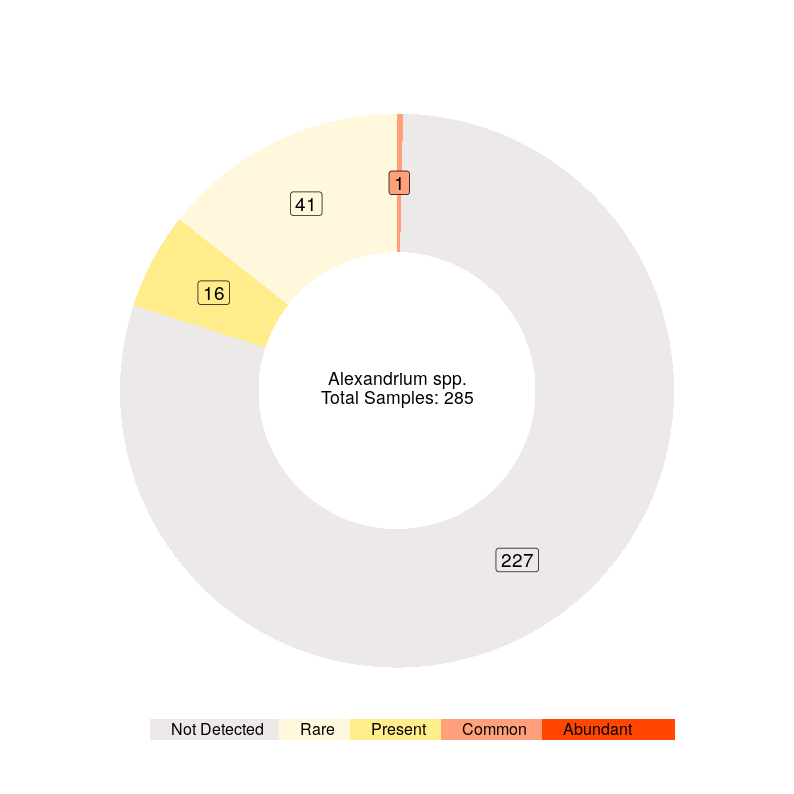
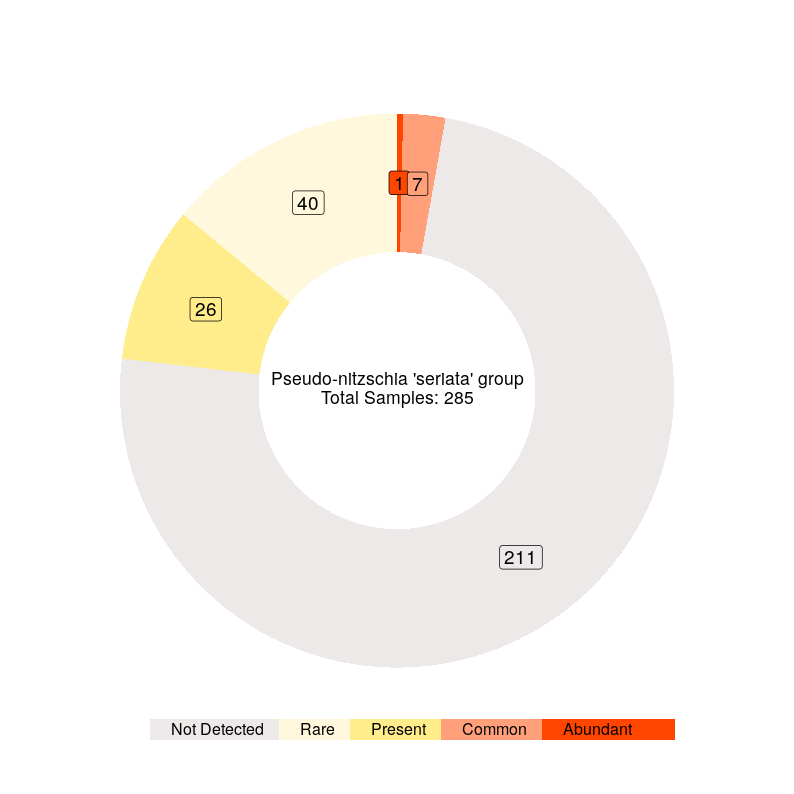
Water Sample Detailed Data
| Date | County | Site | PN Percent Comp. | PN Density | AL Percent Comp. | AL Density |
|---|---|---|---|---|---|---|
| 8/2/2023 | San Luis Obispo | Morro Bay, Boat Launch | 5 | PRESENT | 0 | ABSENT |
| 8/2/2023 | San Diego | Imperial Beach Pier | 0.5 | RARE | 0 | ABSENT |
| 8/3/2023 | San Luis Obispo | San Luis Obispo, Cal Poly Pier | 0.5 | RARE | 0 | ABSENT |
| 8/3/2023 | San Luis Obispo | Pismo Pier | 3 | PRESENT | 0 | ABSENT |
| 8/4/2023 | Marin | Berkeley Marina | 0 | ABSENT | 0.5 | RARE |
| 8/5/2023 | San Mateo | Pillar Point Harbor | 0.5 | RARE | 0 | ABSENT |
| 8/7/2023 | San Luis Obispo | Morro Bay, Boat Launch | 2 | PRESENT | 0 | ABSENT |
| 8/7/2023 | Marin | Tomales Bay, Lease #M430-15 | 0 | ABSENT | 0.5 | RARE |
| 8/7/2023 | Sonoma | Bodega Harbor, USCG Dock | 4 | PRESENT | 0 | ABSENT |
| 8/7/2023 | San Diego | Agua Hedionda Lagoon | 0 | ABSENT | 0.5 | RARE |
| 8/7/2023 | Marin | Berkeley Marina | 0 | ABSENT | 0.5 | RARE |
| 8/7/2023 | Marin | Point Richmond, Ferry Point | 0 | ABSENT | 3 | PRESENT |
| 8/7/2023 | San Diego | La Jolla, Scripps Pier | 0.5 | RARE | 1.5 | PRESENT |
| 8/8/2023 | San Luis Obispo | Port San Luis, Diablo Cove | 10 | COMMON | 0.5 | RARE |
| 8/9/2023 | Santa Cruz | Santa Cruz Wharf | 0 | ABSENT | 0.5 | RARE |
| 8/9/2023 | Santa Barbara | Goleta Pier | 0.5 | RARE | 0 | ABSENT |
| 8/10/2023 | Santa Barbara | Santa Cruz Is., Scorpion Anch. | 0.5 | RARE | 0 | ABSENT |
| 8/11/2023 | Orange | Bolsa Chica | 0 | ABSENT | 0.5 | RARE |
| 8/11/2023 | Los Angeles | Catalina Island, Avalon Bay | 0 | ABSENT | 0.5 | RARE |
| 9/4/2023 | Los Angeles | Palos Verdes, OFFSHORE | 0 | ABSENT | 0.5 | RARE |
| 9/5/2023 | San Luis Obispo | Morro Bay, Boat Launch | 0.5 | RARE | 1 | PRESENT |
| 9/5/2023 | San Diego | La Jolla, Scripps Pier | 0 | ABSENT | 0.5 | RARE |
| 9/5/2023 | San Luis Obispo | Morro Bay, North T-Pier | 5 | PRESENT | 10 | COMMON |
| 9/6/2023 | San Luis Obispo | San Luis Obispo, Cal Poly Pier | 0.5 | RARE | 0 | ABSENT |
| 9/6/2023 | Santa Cruz | Santa Cruz Wharf | 0.5 | RARE | 0 | ABSENT |
| 9/6/2023 | San Diego | Imperial Beach Pier | 0.5 | RARE | 0 | ABSENT |
| 9/7/2023 | San Luis Obispo | Port San Luis, Diablo Cove | 0 | ABSENT | 0.5 | RARE |
| 9/8/2023 | Humboldt | Orick Beach | 0.5 | RARE | 0 | ABSENT |
| 9/9/2023 | Humboldt | Trinidad Pier | 5 | PRESENT | 0.5 | RARE |
| 9/10/2023 | Monterey | Monterey Bay, Commercial Wharf | 3 | PRESENT | 0.5 | RARE |
| 9/11/2023 | San Luis Obispo | Morro Bay, Boat Launch | 0 | ABSENT | 5 | PRESENT |
| 9/11/2023 | Marin | Tomales Bay, Lease #M430-15 | 0 | ABSENT | 5 | PRESENT |
| 9/11/2023 | Humboldt | Humboldt Bay, Indian Is. Ch. | 0.5 | RARE | 3 | PRESENT |
| 9/11/2023 | San Diego | La Jolla, Scripps Pier | 0.5 | RARE | 0 | ABSENT |
| 10/2/2023 | Marin | Drakes Bay, Chimney Rock LBS | 0 | ABSENT | 3 | PRESENT |
| 10/2/2023 | Humboldt | Humboldt Bay, Indian Is. Ch. | 15 | COMMON | 0 | ABSENT |
| 10/2/2023 | San Diego | La Jolla, Scripps Pier | 0.5 | RARE | 0.5 | RARE |
| 10/3/2023 | Los Angeles | Malibu Pier | 0 | ABSENT | 0.5 | RARE |
| 10/4/2023 | San Diego | Imperial Beach Pier | 0 | ABSENT | 0.5 | RARE |
| 10/6/2023 | Orange | Bolsa Chica | 0.5 | RARE | 0 | ABSENT |
| 10/9/2023 | Humboldt | Humboldt Bay, Indian Is. Ch. | 16 | COMMON | 0 | ABSENT |
| 10/9/2023 | San Luis Obispo | Morro Bay, Boat Launch | 5 | PRESENT | 0 | ABSENT |
| 10/9/2023 | San Diego | Agua Hedionda Lagoon | 0.5 | RARE | 0 | ABSENT |
| 10/9/2023 | San Luis Obispo | Cayucos Pier | 2 | PRESENT | 0 | ABSENT |
| 10/10/2023 | San Luis Obispo | Port San Luis, Diablo Cove | 1 | PRESENT | 0 | ABSENT |
| 10/10/2023 | San Luis Obispo | Port San Luis, Diablo Cove | 3 | PRESENT | 0.5 | RARE |
| 10/12/2023 | Orange | San Clemente Pier | 0.5 | RARE | 0 | ABSENT |
| 10/12/2023 | Del Norte | Hidden Beach | 2 | PRESENT | 0 | ABSENT |
| 8/14/2023 | Marin | Tomales Bay, Lease #M430-15 | 3 | PRESENT | 0 | ABSENT |
| 8/14/2023 | Mendocino | Point Arena Pier | 0 | ABSENT | 0.5 | RARE |
| 8/16/2023 | Humboldt | Humboldt Bay, Eureka Marina | 0 | ABSENT | 0.5 | RARE |
| 8/15/2023 | Humboldt | Humboldt Bay, King Salmon | 4 | PRESENT | 0 | ABSENT |
| 8/16/2023 | Marin | Richmond, Marina Bay Harbor | 1 | PRESENT | 0 | ABSENT |
| 8/14/2023 | San Luis Obispo | Morro Bay, Boat Launch | 0.5 | RARE | 1 | PRESENT |
| 8/21/2023 | Marin | Tomales Bay, Lease #M430-15 | 0.5 | RARE | 0.5 | RARE |
| 8/14/2023 | Mendocino | Mendocino, Noyo Harbor | 0.5 | RARE | 0.5 | RARE |
| 8/16/2023 | San Luis Obispo | Port San Luis, Diablo Cove | 10 | COMMON | 0 | ABSENT |
| 8/14/2023 | Marin | Rodeo Beach | 0 | ABSENT | 0.5 | RARE |
| 8/20/2023 | Mendocino | Mendocino, Noyo Harbor | 0 | ABSENT | 1 | PRESENT |
| 8/18/2023 | Santa Barbara | Santa Barbara Ch., Naples Pt | 0.5 | RARE | 0 | ABSENT |
| 8/28/2023 | Sonoma | Bodega Harbor, USCG Dock | 0 | ABSENT | 4 | PRESENT |
| 8/28/2023 | Humboldt | Humboldt Bay, Indian Is. Ch. | 1 | PRESENT | 0 | ABSENT |
| 8/19/2023 | San Luis Obispo | San Simeon Pier | 0 | ABSENT | 0.5 | RARE |
| 8/28/2023 | Marin | Drakes Bay, Chimney Rock LBS | 0 | ABSENT | 0.5 | RARE |
| 8/30/2023 | San Mateo | Pacifica Pier | 0.5 | RARE | 0 | ABSENT |
| 8/30/2023 | San Mateo | Pacifica Pier | 0 | ABSENT | 0.5 | RARE |
| 8/26/2023 | San Francisco | San Francisco Bay, BAY | 0.5 | RARE | 1 | PRESENT |
| 8/31/2023 | Ventura | Ventura, Port Hueneme Pier | 0.5 | RARE | 0 | ABSENT |
| 8/29/2023 | Mendocino | Mendocino, Noyo Harbor | 0 | ABSENT | 7 | PRESENT |
| 8/28/2023 | Mendocino | Point Arena Pier | 0 | ABSENT | 0.5 | RARE |
| 8/26/2023 | San Luis Obispo | Cayucos Pier | 0 | ABSENT | 0.5 | RARE |
| 9/18/2023 | San Luis Obispo | Morro Bay, Boat Launch | 0.5 | RARE | 5.5 | PRESENT |
| 9/18/2023 | Marin | Tomales Bay, Lease #M430-15 | 0 | ABSENT | 0.5 | RARE |
| 9/17/2023 | Marin | Drakes Bay, Chimney Rock LBS | 0.5 | RARE | 8 | PRESENT |
| 9/18/2023 | Humboldt | Humboldt Bay, Indian Is. Ch. | 0.5 | RARE | 0.5 | RARE |
| 9/14/2023 | Orange | San Clemente Pier | 0 | ABSENT | 0.5 | RARE |
| 9/19/2023 | San Mateo | Bean Hollow State Beach | 0 | ABSENT | 0.5 | RARE |
| 9/19/2023 | San Mateo | Pillar Point Harbor | 0.5 | RARE | 0.5 | RARE |
| 9/18/2023 | San Diego | La Jolla, Scripps Pier | 0 | ABSENT | 0.5 | RARE |
| 9/25/2023 | Marin | Tomales Bay, Lease #M430-15 | 0.5 | RARE | 0 | ABSENT |
| 9/18/2023 | Mendocino | Mendocino, Noyo OFFSHORE | 0.5 | RARE | 6 | PRESENT |
| 9/20/2023 | Santa Cruz | Santa Cruz, Capitola Pier | 1 | PRESENT | 0 | ABSENT |
| 9/25/2023 | Humboldt | Humboldt Bay, Indian Is. Ch. | 51 | ABUNDANT | 0 | ABSENT |
| 9/29/2023 | San Francisco | San Francisco, Presidio Pier | 0.5 | RARE | 0 | ABSENT |
| 9/22/2023 | San Luis Obispo | San Simeon Pier | 0 | ABSENT | 0.5 | RARE |
| 9/25/2023 | Mendocino | Point Arena Pier | 0 | ABSENT | 0.5 | RARE |
| 9/17/2023 | Marin | GFNMS, San Francisco Line 6W | 6 | PRESENT | 1 | PRESENT |
| 9/17/2023 | Marin | GFNMS, San Francisco Line 6E | 15 | COMMON | 0.5 | RARE |
| 9/16/2023 | San Francisco | GFNMS, San Francisco Line N6WN | 0 | ABSENT | 0.5 | RARE |
| 9/23/2023 | Marin | GFNMS, Marin Line 4W | 0.5 | RARE | 0.5 | RARE |
| 9/23/2023 | Marin | GFNMS, Marin Line 4E | 10 | COMMON | 0 | ABSENT |
| 9/28/2023 | San Mateo | Bean Hollow State Beach | 2 | PRESENT | 0 | ABSENT |
| 9/28/2023 | Del Norte | Hunter Rock, north | 30 | COMMON | 0 | ABSENT |
| 10/16/2023 | Humboldt | Humboldt Bay, Indian Is. Ch. | 9 | PRESENT | 0 | ABSENT |
| 10/16/2023 | San Luis Obispo | Morro Bay, Boat Launch | 8 | PRESENT | 0 | ABSENT |
| 10/23/2023 | San Luis Obispo | Morro Bay, Boat Launch | 3 | PRESENT | 0 | ABSENT |
| 10/23/2023 | Humboldt | Humboldt Bay, Indian Is. Ch. | 6 | PRESENT | 0 | ABSENT |
| 10/17/2023 | Mendocino | Mendocino, Noyo Harbor | 0.5 | RARE | 0 | ABSENT |
| 10/17/2023 | San Diego | Imperial Beach Pier | 0.5 | RARE | 0 | ABSENT |
| 10/18/2023 | Santa Cruz | Santa Cruz Wharf | 0.5 | RARE | 0.5 | RARE |
| 10/25/2023 | Monterey | Monterey Bay, Commercial Wharf | 0 | ABSENT | 0.5 | RARE |
| 10/20/2023 | Orange | Bolsa Chica | 6 | PRESENT | 0 | ABSENT |
| 10/27/2023 | Marin | Richmond, Marina Bay Harbor | 3 | PRESENT | 0 | ABSENT |
| 10/27/2023 | Mendocino | Mendocino, Noyo Harbor | 0.5 | RARE | 0 | ABSENT |
| 10/30/2023 | Marin | Drakes Bay, Chimney Rock LBS | 0.5 | RARE | 0 | ABSENT |
| 10/30/2023 | San Luis Obispo | Morro Bay, Boat Launch | 0.5 | RARE | 0 | ABSENT |
| 10/30/2023 | Humboldt | Humboldt Bay, Indian Is. Ch. | 0.5 | RARE | 0 | ABSENT |
| 10/27/2023 | Ventura | Ventura, Port Hueneme Pier | 0.5 | RARE | 0 | ABSENT |
| 10/27/2023 | Orange | Bolsa Chica | 0 | ABSENT | 0.5 | RARE |
| 10/16/2023 | San Diego | La Jolla, Scripps Pier | 1 | PRESENT | 0 | ABSENT |
Percent composition categories help us look at phytoplankton trends across an entire region to evaluate risk of biotoxin presence. Many other factors contribute to our evaluation of risk in an area. These samples are posted for informational purposes only. They are not intended to inform the public of the presence or lack of risk. For the latest health advisory information, see the CDPH Health Advisory Map below.
A network of Imaging FlowCytobots (IFCBs) continuously photographs particles, such as plankton, in the water. Using machine learning, plankton species can be automatically identified. This will help improve the ability to detect and respond to Harmful Algal Blooms, including the ability to assess conditions that may lead to toxin production or blooms of toxin-producing algae.
Additional images and data are available on the IFCB dashboard.
California HAB Bulletin
All data and reports have been synthesized by SCCOOS for the California Harmful Algal Bloom Monthly Bulletin.
Data Access & Resources:
C-HARM, NOAA CoastWatch ERDDAP
Toxic Phytoplankton Observations, CDPH
Imaging FlowCytoBot Dashboard
CalHABMAP Datasets, SCCOOS ERDDAP
